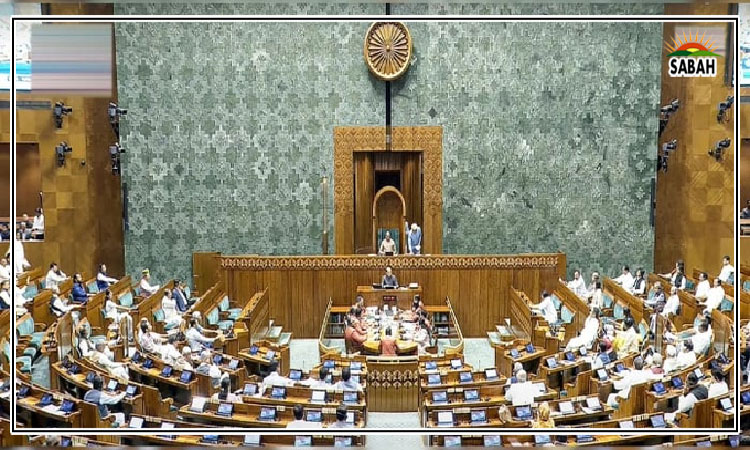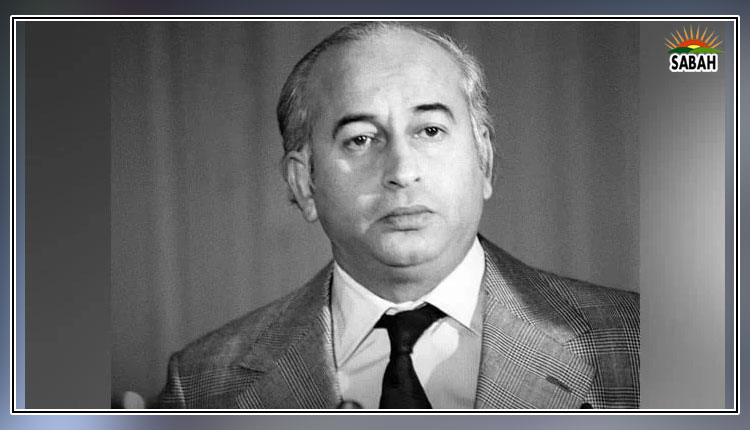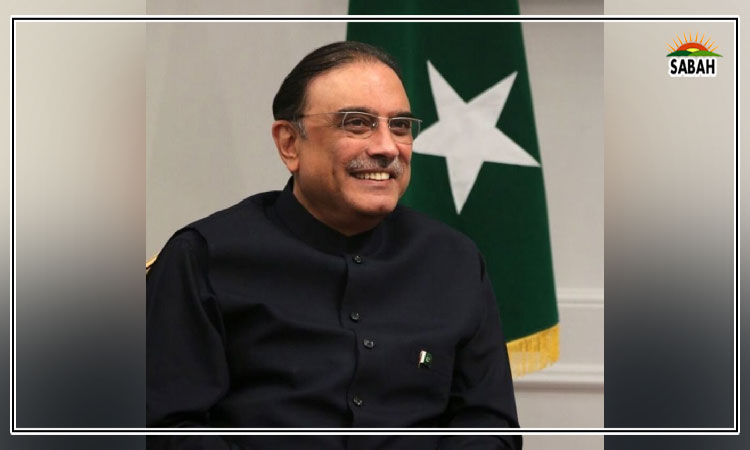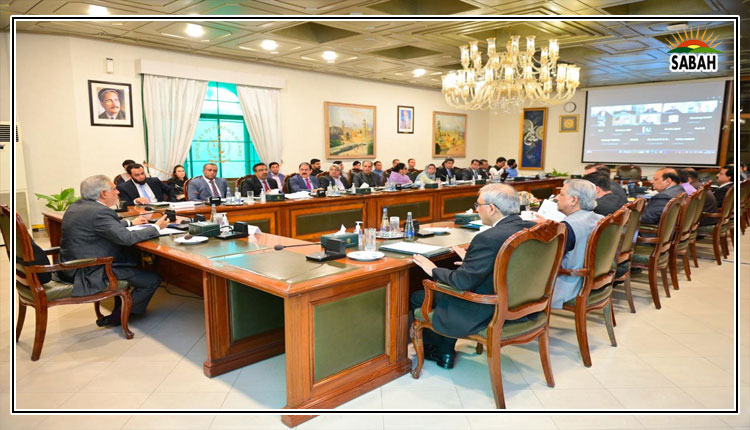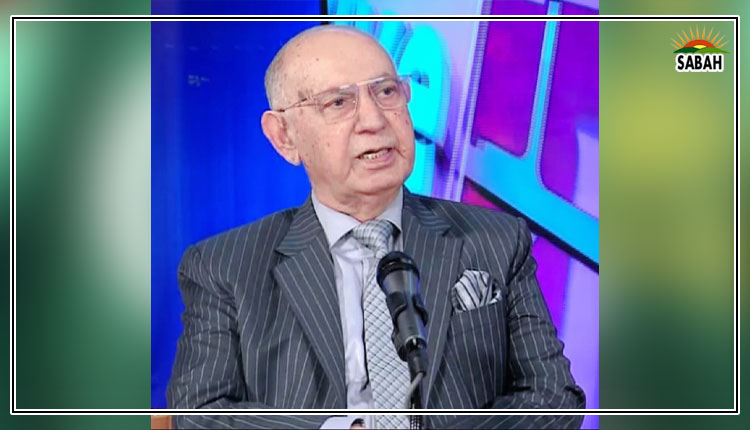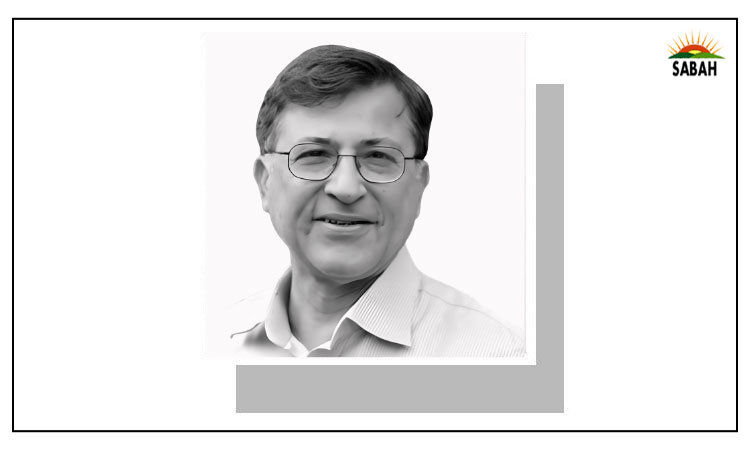Ram Mandir — an ill portent ۔۔۔۔ Pervez Hoodbhoy
WHERE the five-centuries-old Babri Mosque once stood, there now stands Ram Mandir. Around it, a new Vatican-like city is coming up.
A staggering $4.2 billion have been collected as donations, both official and private. Though the temple’s completion is years away, consecration ceremonies began days ago. RSS has distributed 50 million small food packets and the first seven tonnes of halwa have arrived.
The government is arranging train and helicopter services for 100,000 sadhus and devotees, contracts for new five-star hotels have been awarded, and schools are holding daily prayers. Muslims have been advised to limit their travel by bus and train.
On Monday, Prime Minister Narendra Modi will arrive in Ayodhya. His recent message: “The whole world is waiting for the historic moment. With folded hands, I am requesting 140 crore people of the country that on Jan 22, when the consecration of Ramlalla’s idol takes place, light the Ram Jyoti in your house and celebrate Deepawali.” Hospitals in Uttar Pradesh report that dozens of pregnant women have requested C-sections so their child is born on this auspicious date.
The purpose of these celebrations — and the PM’s lead role — is ostensibly religious, but some senior priests dispute that. They will boycott the event because Modi is technically unqualified for performing the ‘pran-pratishtha’ (putting soul inside an idol) ritual. This scarcely matters, because Modi wants to signal once again that under him a new India has arrived, one bearing little or no resemblance to the India born in 1947.
Hindutva’s message targets two audiences. The first is India’s Muslims: reincarnated India is for Hindus, not for them. Just as Pakistan treats its Hindu population as inferior citizens with fewer rights, so too Muslims in India must never forget they are the unwanted progeny of invaders who despoiled a pristine land and robbed it of its glories.
Religious communalism in reincarnated India is no longer considered abhorrent.
Revenge — exemplified by destroying ancient structures — is Hindutva’s guiding principle. In March 2023, when a mob shouting ‘Jai Shri Ram’ burned down a century-old madressah and library containing ancient manuscripts, it was tit-for-tat for the sacking of Nalanda University by the 12th-century Muslim invader, Bakhtiyar Khilji. To avoid adverse consequences during the Ram Mandir consecration, RSS has recommended that Muslims chant “Shri Ram, Jai Ram, Jai Jai Ram” in mosques, dargahs and madressahs.
The second message is to BJP’s political opposition, principally Congress. Change your discourse from secular to religious and play on our turf. Else, be seen as anti-Hindu and lose out in the April 2024 elections, when Modi will seek his third term.
Ram Mandir’s inauguration has left Congress dazed. Just days earlier, its top leaders had scorned this ‘political event’ and refused to attend. But those below could not take the pressure and broke rank. They visited Ayodhya, took a holy dip in the river, and vowed they too want “Ram Rajya” — albeit a better one than BJP’s.
Mixing religion with politics — whether in the Hindu or Muslim way — won’t surprise those who know Pakistan’s history. Soon after the All India Muslim League suffered a crushing defeat in the 1937 elections, its leadership successfully weaponised religion and wove it into politics. It was reinjected with a double dose by Gen Ziaul Haq in the 1980s.
Today, in every Pakistani political party’s arsenal, religion is the weapon of choice for demolishing opponents. When in power, PTI used it repeatedly against PML-N and PPP. In retaliation, Maryam Nawaz’s media team has recently returned the favour — with markup — in attacking Imran Khan.
Still, to me, an infrequent visitor to India, secularism’s rapid retreat comes as a surprise. Twenty years ago, while visiting the Jawaharlal Nehru Institute for Advanced Research in Bangalore, I was intrigued by Nehru’s words inscribed on the foundation stone: “I too have worshipped at the shrine of science.” But I don’t see ‘worship’ and ‘shrine’ tallying well with modern science or the scientific temper associated with Nehru.
My hosts rushed to explain. Shrine of science, they said, was actually a metaphorical allusion to labs and research centres. Nehru, they proudly asserted, was an atheist and never went to temples. Later, I found he actually did visit temples as well as mosques. Further, as in his prison diary The Discovery of India, his view of religion is fairly nuanced.
Mani Shankar Aiyar recently argued that Nehru would have fought tooth and nail against making Hinduism India’s official religion. In December 1947, his cabinet decided to rebuild — at state expense — the Somnath temple plundered in the 11th century by Mahmud Ghazni. When Nehru found out, he was furious and had the minutes secretly altered. But so long as the state was not involved, he said, any private initiative was fine. In 1951, when president Rajendra Prasad sought to officially visit the restored temple, Nehru refused permission.
India’s other founder, Mahatma Gandhi, would also have roundly rejected making the grand new Ayodhya temple. Ramachandra Guha, his biographer, notes that whereas Gandhi called himself a devout Hindu, yet in the many years he lived in Ahmedabad, he did not visit any of the city’s temples. Why, said Gandhi, does God need a building or idol to be worshipped?
Gandhi’s eclecticism is evident from his prayer meeting of Nov 21, 1947: “As per the information I have received, about 137 mosques of Delhi have been virtually destroyed in the recent riots. Some of them have been turned into temples. In my opinion, this goes against every tenet of religion … The magnitude of this act cannot be mitigated by saying that Muslims in Pakistan have also despoiled Hindu temples or turned them into mosques.”
India’s descent into a Hindu rashtra generates a kind of smug satisfaction in Pakistan, a vindication of the two-nation theory that Hindus and Muslims cannot ever live together. But then, how shall the Muslims of India, and the few Hindus remaining in Pakistan, fare in times to come? Whether India can ever revert to its earlier, more accommodative and secular self, is an open question. For Pakistan, whose flirtation with liberal values ended in the 1970s, it appears even more difficult.
The writer is an Islamabad-based physicist and writer.
Courtesy Dawn, January 20th, 2024


